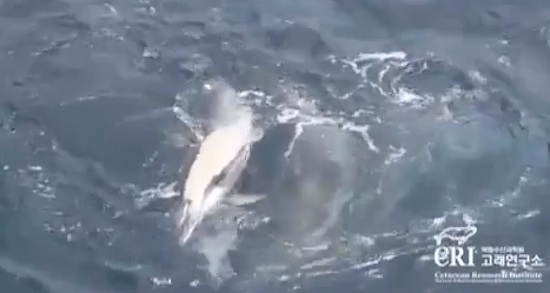Animals are better than we are.
Posted to the New Scientist website
Dolphins form life raft to help dying friend
* 12:21 25 January 2013 by Michael Marshall
Everybody’s favourite cetacean just got a little more lovable. For the first time, dolphins have been spotted teaming up to try to rescue an injured group member. The act does not necessarily mean dolphins are selfless or can empathise with the pain of their kin, however.
Kyum Park of the Cetacean Research Institute in Ulsan, South Korea, and colleagues were surveying cetaceans in the Sea of Japan in June 2008. They spent a day following a group of about 400 long-beaked common dolphins (Delphinus capensis).
In the late morning they noticed that about 12 dolphins were swimming very close together. One female was in difficulties: it was wriggling and tipping from side to side, sometimes turning upside-down. Its pectoral flippers seemed to be paralysed.
Life raftThe other dolphins crowded around it, often diving beneath it and supporting it from below. After about 30 minutes, the dolphins formed into an impromptu raft: they swam side by side with the injured female on their backs. By keeping the injured female above water, they may have helped it to breathe, avoiding drowning (see video, above).
After another few minutes some of the helper dolphins left. The injured dolphin soon dropped into a vertical position. The remaining helpers appeared to try and prop it up, possibly to keep its head above the surface, but it soon stopped breathing, say the researchers. Five dolphins stayed with it and continued touching its body, until it sank out of sight.
“It does look like quite a sophisticated way of keeping the companion up in the water,” says Karen McComb at the University of Sussex in Brighton, UK. Such helping behaviours are only seen in intelligent, long-lived socialMovie Camera animals. In most species, injured animals are quickly left behind.
For the love of podWhile it may seem selfless to help an injured fellow, McComb says the helper dolphins might get some benefit. Rescuing the struggling dolphin could help maintain their group, and thus control of their territory. Furthermore, if the group contains close relatives, protecting those relatives helps the dolphins preserve their shared genes.
The simple act of working together could also bond the group more strongly. “It makes a lot of sense in a highly intelligent and social animal for there to be support of an injured animal,” McComb says.
The act of helping also seems to suggest that the dolphins understand when others are suffering, and can even empathise: that is, imagine themselves in the place of the suffering dolphin. But while this is possible, McComb says the helping behaviour could evolve without the need for empathy.
There have been reports of single dolphins helping others, generally mothers helping their calves, but no cases of groups of dolphins working together to help another. Dolphins have also been seen interacting with the corpses of dead dolphins, which some researchers interpret as a form of mourning.
Almost certainly this animal was sick and there was nothing that could be done even by humans with all our technology and medicine. But they tried, with nothing except their own bodies. Life is like that.
2 comments




